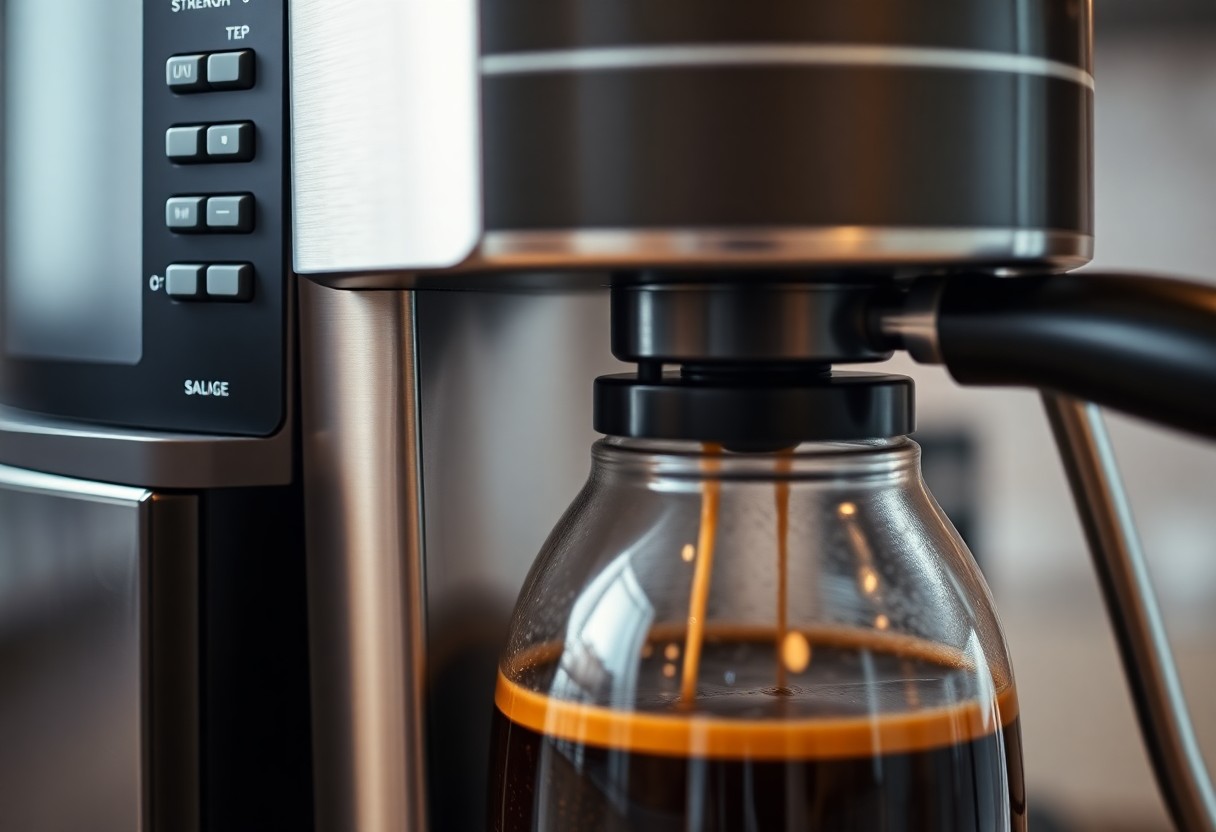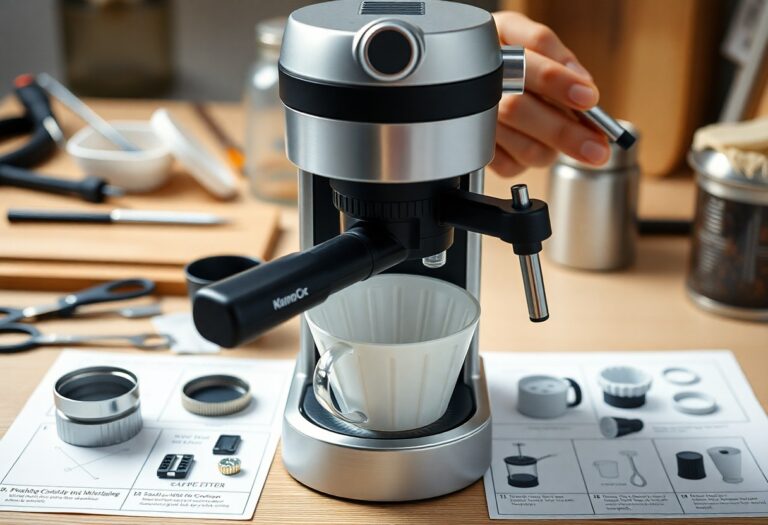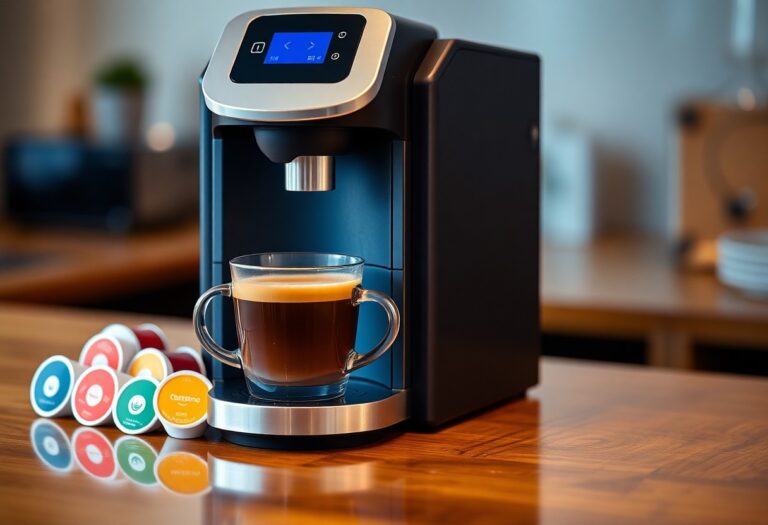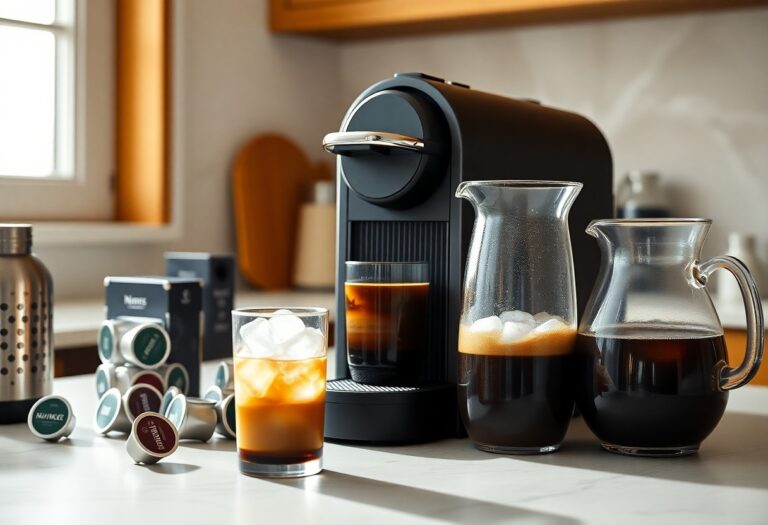What Does a Coffee Machine Do – Basic Functions
Most coffee enthusiasts rely on a coffee machine to deliver that perfect cup of java, but you may wonder what this appliance truly does. At its core, a coffee machine brews coffee by heating water and extracting flavors from coffee grounds, maintaining optimum temperatures for the best extraction. With features like programmable settings and intuitive interfaces, your machine can cater to your personal taste, providing convenience and quality. Understanding these basic functions will help you appreciate your coffee-making ritual, ensuring every sip is just as satisfying as the last.
Key Takeaways:
- A coffee machine brews coffee by heating water and forcing it through ground coffee beans.
- Most machines offer functions such as brewing strength selection and programmable timers for convenience.
- Some models include additional features like built-in grinders, milk frothers, or hot water dispensers.
- Maintenance features often include self-cleaning options and indicators for descaling and water filtration.
- Compatibility with different coffee types (espresso, drip, etc.) varies by machine type and design.
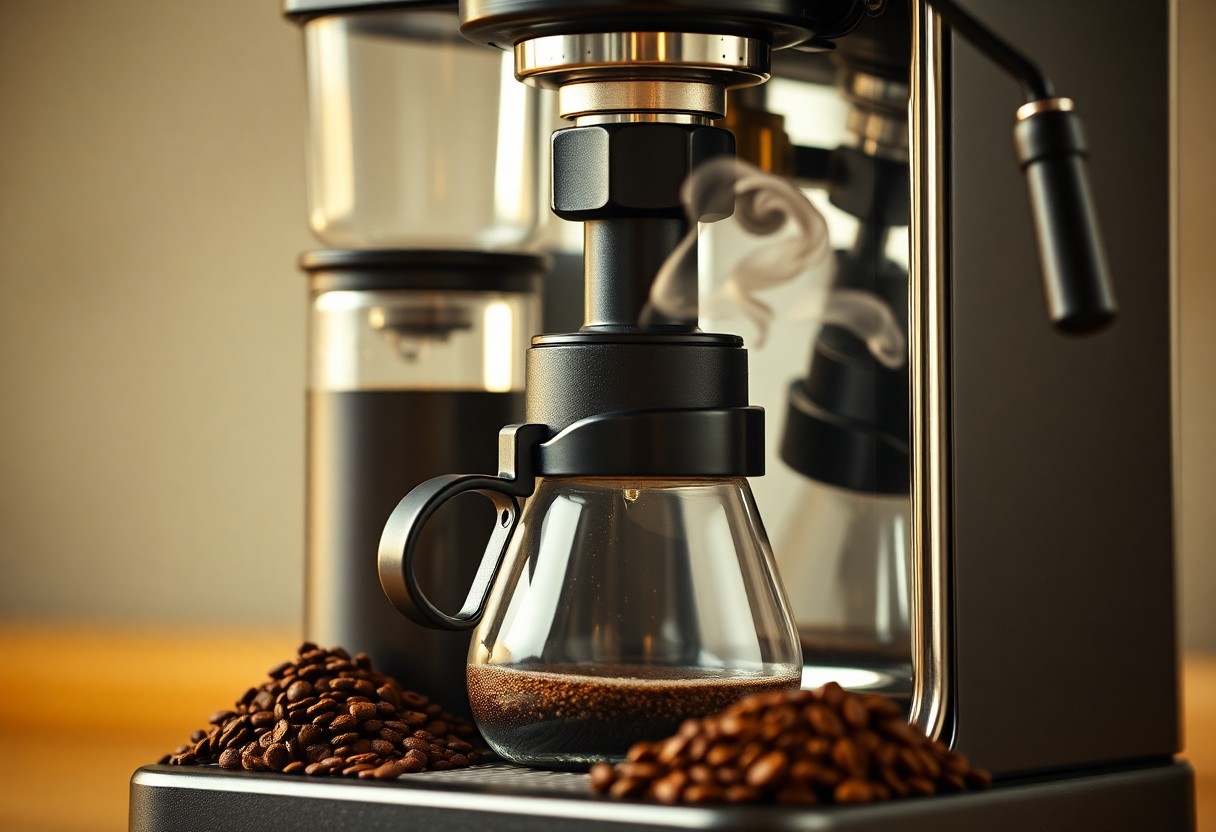
The Brewing Process Unveiled
The brewing process is where the magic happens, transforming simple water and coffee grounds into a complex beverage full of flavor and aroma. This sequence of steps is meticulously engineered within your coffee machine to achieve optimal results. From heating the water to the extraction of imperative oils and flavors from the coffee grounds, each function is designed to enhance your coffee experience, ensuring you enjoy the perfect cup every time.
Transforming Water to Coffee: The Essential Heat Process
Heating the water is the first and arguably most vital step in brewing your coffee. Your machine typically heats the water to a temperature between 195°F and 205°F, which is optimal for extracting flavors without scalding the coffee grounds. This precision ensures that you maximize the extraction of various flavor compounds without introducing bitterness, resulting in a well-balanced cup of coffee.
The Role of Pressure in Extraction Magic
Pressure significantly influences the extraction process in espresso machines, creating rich and flavorful coffee. Utilizing around 9 bars of pressure, the machine forces hot water through finely ground coffee, allowing oils and flavors to be extracted in a matter of seconds. This high-pressure environment not only enhances the taste but also forms the all-important crema that crowns each shot.
This pressure creates a dynamic environment that intensifies the extraction process, pushing water through the coffee grounds with enough force to dissolve the oils and flavors efficiently. For example, traditional espresso machines maintain consistent pressure, allowing you to achieve a concentrated brew with robust flavors. The difference made by this pressure can be profound; you’ll notice a clear distinction in taste between coffee brewed under high pressure and that produced under standard brewing methods. This extraction magic is why espresso is favored for its bold profile, showcasing the coffee’s true essence.
The Art of Customization: Settings and Options
Modern coffee machines are designed to cater to your specific preferences, allowing for a level of customization that amplifies your brewing experience. With an array of settings and options, you can fine-tune everything from grind coarseness to brew strength, giving you control over how your daily cup of coffee unfolds. This personal touch not only enhances flavor but makes each cup uniquely yours, elevating your coffee ritual beyond the ordinary.
Grinding Preferences: Understanding Different Grind Coarseness
The grind size of your coffee beans significantly impacts the extraction process, influencing flavor, aroma, and body. A fine grind enhances extraction time for espresso, while a coarse grind works best for methods like French press, allowing for slower extraction to reduce bitterness. Experimenting with grind sizes helps you find the perfect balance that complements your brewing style and taste.
Brew Strength Selection: Personal Taste Meets Technology
Brew strength options allow you to customize the intensity of your coffee. Select the strength that matches your palate, whether you prefer a delicate and smooth flavor or a rich and bold experience. Some machines even provide presets that adjust brewing time and temperature, optimizing the extraction depending on your chosen strength level.
When opting for brew strength, you’ll notice that machines often present different settings, such as light, medium, and strong. Going for a light brew will typically use less coffee or shorter extraction time, yielding a milder flavor. In contrast, a strong option increases coffee quantity or alters temperature, resulting in a robust and intense cup. This level of customization enables you to explore various flavor profiles, ensuring that every sip aligns with your preferences, making your participation enjoyable and rewarding.
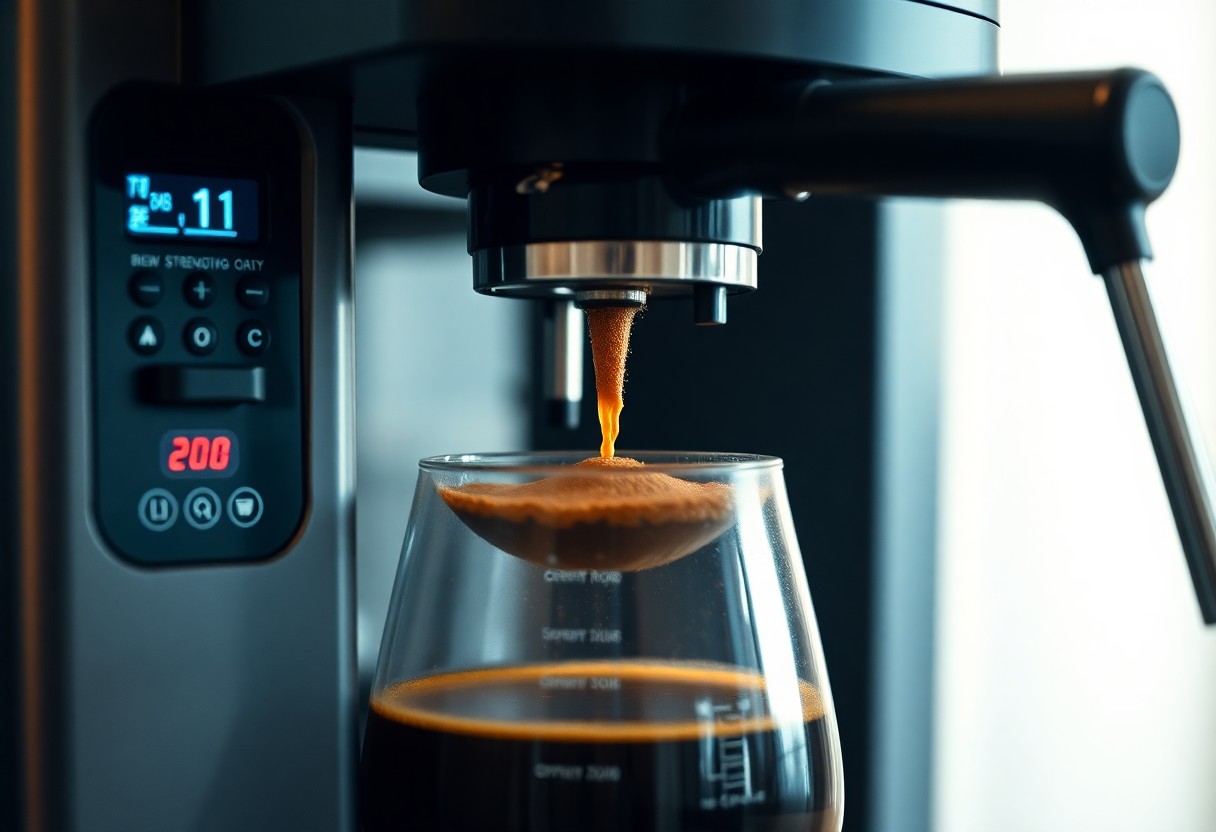
Beyond Brewing: Additional Features Worth Noting
Beyond the imperative brewing capabilities, many contemporary coffee machines offer additional features that enhance your coffee experience. These include frothing capability, which lets you indulge in lattes and cappuccinos at home, as well as smart technology integration that connects your machine to your smartphone, enabling easy control and customization of your brews from anywhere. Understanding these features can elevate your coffee enjoyment while providing efficient and user-friendly options.
Frothing Capability: Crafting the Perfect Cappuccino
With frothing capabilities, your coffee machine becomes a barista in your kitchen, allowing you to create luxurious, frothy milk for cappuccinos and lattes. This feature is imperative for achieving that creamy texture and rich flavor, transforming standard coffee into an artisanal experience. Many machines come equipped with steam wands or automatic frothers tailored specifically for optimal milk frothing.
Smart Technology Integration: Connectivity and Control
Smart technology integration revolutionizes your coffee-making routine by offering seamless connectivity and control through your smartphone or smart home systems. This feature allows you to remotely schedule brews, customize settings, and even control the machine’s maintenance cycles from anywhere.
This integration generally utilizes dedicated apps that synchronize with your coffee machine, allowing you to adjust brew strength, temperature, and even create personalized recipes. For instance, some models let you save your favorite coffee settings, which you can instantly access for future use. Additionally, with voice assistant compatibility, you can command your coffee machine hands-free, making it easier than ever to fit that perfect cup of coffee into your busy life. The convenience and personalization offered by smart technology truly enhance the coffee experience, ensuring every cup meets your exact preferences.
Maintenance for Longevity: What Every User Should Know
Prioritizing maintenance can significantly enhance the lifespan and performance of your coffee machine. Implementing simple practices like regular cleaning and prompt troubleshooting can prevent common problems and help ensure that your machine brews delicious coffee for years to come. Users should establish a routine for care and maintenance that includes various cleaning techniques tailored to the machine type and model, as well as being equipped to address minor issues as they arise.
Routine Cleaning and Descaling: Ensuring Optimal Performance
To keep your coffee machine operating at its best, routine cleaning and descaling are necessary. Regularly clean the brew basket, carafe, and any other removable parts in warm soapy water. Moreover, descaling the machine every few months helps remove mineral buildup from hard water, which can negatively affect taste and performance. Products designed specifically for coffee machines can simplify this process, helping to maintain optimal brewing temperature and flavor extraction.
Troubleshooting Common Issues: A User’s Guide
Maintaining your coffee machine goes hand in hand with knowing how to troubleshoot common issues. Understanding what to look for in situations such as slow brewing, unusual noises, or leaking can save you time and potential repair costs. Issues like inconsistent brewing times can often be traced back to clogged filters or old coffee grounds; regular checks can help identify these problems before they escalate.
For instance, if your coffee machine is brewing slowly, start by examining the water reservoir for blockages or low water levels. Inspect the brew basket for leftover grounds that could impede water flow. An unexpected noise may indicate a mechanical failure; tightening connections and inspecting for loose parts might remedy the issue. Additionally, if your machine leaks, ensure that all water connections are secure and that seals are intact. Keeping a close eye on these details can empower you to respond swiftly and efficiently, preserving your machine’s functionality.
The Broader Impact of Coffee Machines on Daily Life
Coffee machines have revolutionized your daily routine, influencing your productivity and social habits. By streamlining the brewing process, they allow for quick access to caffeine throughout your busy day. As a result, you can savor your favorite brew without eating into your valuable time, facilitating not just personal enjoyment, but also a deeper connection with How Coffee Makers Work | HowStuffWorks – Home and Garden. This ease of access helps create opportunities for interaction with others, whether at home or in the workplace.
Cultural Significance: More Than Just a Morning Routine
Your coffee machine symbolizes more than caffeine; it represents a daily ritual that defines social interactions. In many cultures, sharing a cup of coffee fosters connection and encourages conversation. The act of brewing coffee can become a meditative process, setting the tone for your day ahead, thus weaving itself into the fabric of various communal and personal traditions.
Environmental Considerations: Sustainability in Coffee Consumption
As environmental awareness grows, considering the sustainability of your coffee consumption becomes imperative. The methods and materials used in coffee machines pose questions about waste management and energy consumption. From single-use pods contributing to landfill overflow to eco-friendly alternatives that promote composting or recycling, understanding your choices can lead to a greener coffee experience.
Many consumers are shifting towards more sustainable options, such as reusable filters and organic coffee beans sourced from farms that prioritize eco-friendly practices. Additionally, energy-efficient machines reduce power consumption, proving that your coffee habit can align with environmental stewardship. Brands are also innovating towards biodegradable packaging, ensuring that your brewing ritual minimizes its impact on the planet. Adopting these mindful practices not only enhances your coffee experience but also contributes positively to global sustainability efforts.
Conclusion
Summing up, your coffee machine serves imperative functions that elevate your coffee experience. It heats water to the ideal temperature, brews your coffee grounds, and keeps your beverage at a perfect serving temperature. You can customize the strength and flavor of your drinks, making each cup tailored to your preferences. Understanding these basic functions enables you to make the most of your coffee machine, ensuring you consistently enjoy delicious, well-brewed coffee.
FAQ
Q: What are the basic functions of a coffee machine?
A: The primary functions of a coffee machine include heating water, brewing coffee grounds, and dispensing the final beverage. Most machines utilize a brewing process that involves extracting flavors from the coffee grounds, resulting in a flavorful cup of coffee.
Q: How does a coffee machine heat water?
A: Coffee machines typically use an internal heating element that warms the water to an optimal brewing temperature, usually between 195°F and 205°F (90°C to 96°C). This ensures that the flavors from the coffee grounds are effectively extracted during the brewing process.
Q: What role do coffee grounds play in the brewing process?
A: Coffee grounds are the source of flavor for your coffee. When hot water passes through the grounds during brewing, it extracts important oils and flavors. The grind size of the coffee can affect the extraction process, with coarser grinds generally producing a milder cup and finer grinds offering a more intense flavor profile.
Q: Can a coffee machine brew different types of coffee?
A: Yes, many coffee machines are designed to brew various types of coffee, such as espresso, drip coffee, or specialty drinks. Depending on the model, they may have features that allow users to adjust brew strength, water temperature, and even froth milk for lattes and cappuccinos.
Q: How does a coffee machine ensure consistent brewing results?
A: Coffee machines often include built-in features that help maintain consistency, such as programmable brewing times and automatic shut-off functions. Some advanced models even have sensors that monitor water temperature and brewing time, ensuring that each cup is brewed under optimal conditions for the best flavor outcome.

